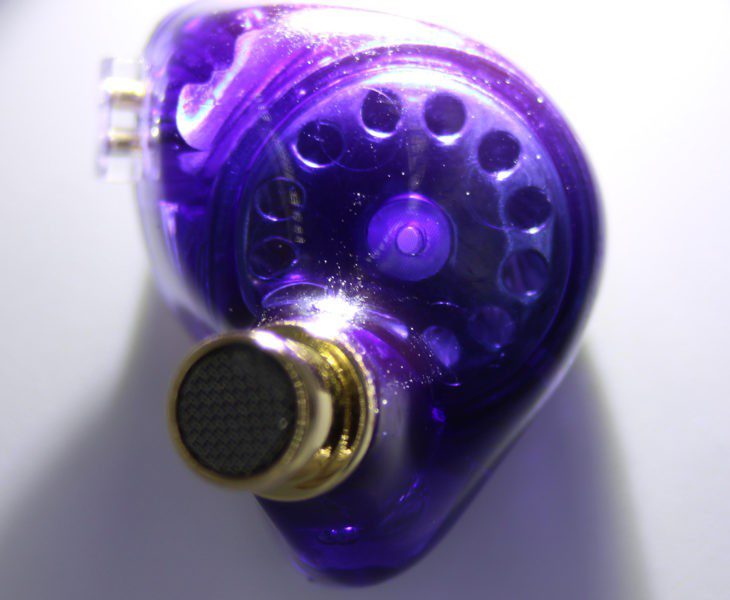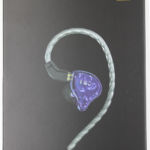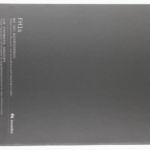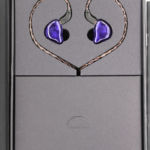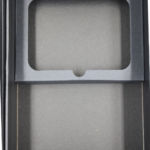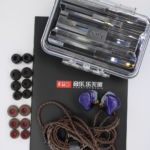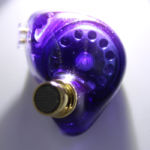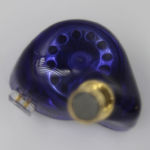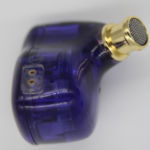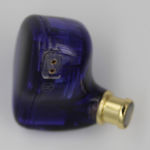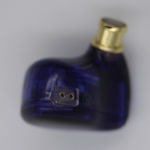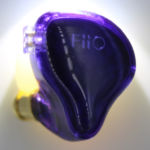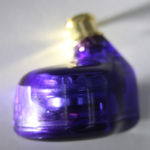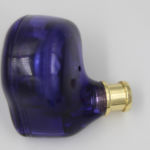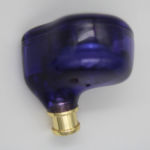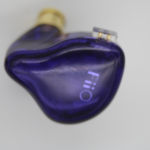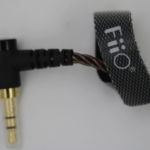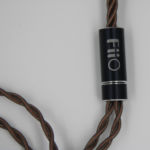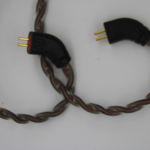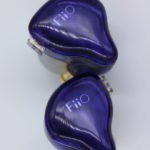Fiio FH1S
disclaimer: I was sent the Fiio FH1S by HiFiGO for purposes of this review. I have no financial interest in HiFiGO and was not compensated other than the product itself. If you have an interest in Fiio products, more information can be found on their website. Remember that Fiio has recently changed sites and while the old URL still works, it is no longer updated with the latest information. To purchase the FH1s, please visit HiFiGO.
Unboxing / Packaging:
The FH1s ships in a book-fold style box with an image of the earpiece on front and specs on reverse. Lifting the flap reveals the manual which is most of the size of the box (thankfully for those of us tired of trying to read with a magnifier). Under that, the earpieces with cable attach rest in a foam surround in a heart shaped pattern. Below the foam surround is a small box containing a quasi-pelican style case with the remainder of the kit tucked inside. I refer to the case as quasi as it is clear with dark insert and the Fiio name on the top. It is definitely pelican in style, but I suspect it is made in-house. Seven sets of tips are provided, three each of two styles of silicones and a single set of foam tips. Remember as you read this that the FH1s is retailing right around $50USD, so a kit that includes a hard case at that price point is a rarity.
Build/Fit:
The FH1s departs from the design of the original entirely. Gone is the F9 shape and aesthetic replaced with a more standard inverse teardrop style with transparent shell and celluloid face plate. Gone is the MMCX connector in favor of the bi-pin. Materials are roughly the same as the FH1 was plastic although many confused it with the F9 that had a similar metal shell. I find both the original and the S comfortable, but think the S is a bit better for smaller ears as most of its size is height vs width being the larger dimension on the original. Venting has changed as well with the original having dual vents one near the mmcx connector and another near the nozzle. The FH1S has a single vent centered over the dynamic driver. L/R labels are now next to the raised bi-pin connector instead of on the inside of the shell. Nozzles haven’t changed much as rake, size, and insertion depth are all roughly equal.
Internals:
Those who remember the original FH1 will know it was a hybrid with a dynamic driver handling the lows and the Knowles 33518 balanced armature handling the high end. The FH1s has the same arrangement but now uses a 13.6mm dynamic driver using a bio-polymer diaphragm and N50 magnets in place of the 10mm titanium coated version used in the original FH1. The 33518 gains a brass sound bore to reduce resonance but is otherwise unchanged from the original model. Nominal impedance is listed as 26Ω with a sensitivity of 106 dB/mW which is also unchanged from the original model. Much like the first generation, the FH1s works well from a smartphone or tablet, but does scale some qualitatively with improved sources. I wasn’t able to find an exploded view of the FH1s, but the featured photo at the top of the post does a good job of displaying how much of the space is utilized by the dynamic driver. it measures 13.6mm while the shell around it is slightly over 15 according to my caliper. The 33518 is mounted in the nozzle itself and is difficult to see in any of the photos as it is mostly hiding behind brass.
Cables:
The cable provided with the FH1S is listed as a single crystal copper cable with 120 cores in litz braid. At the south end, the cable uses a 90º 3.5mm single ended connector in a black plastic housing with a good strain relief and a protective metal cap. The wire exits the jack as a 4 wire twist in a medium brown/copper color. The twist is fairly tight but mine does show an area in the middle that is a bit looser and not as cleanly done as it likely should have been. While it makes no difference sound wise, the fact that it escaped QC is a bit concerning. The splitter is a metal barrel in black with silver highlight rings at top and bottom and Fiio printed on the side. The Chin slider is matching and mates to the top of the splitter nicely when not in use. Wires exit the splitter as 2 wire twists and terminate with pre-formed earhooks and .78mm bi-pin connectors in black plastic housings. To their credit, L/R is molded into the housing and easily visible for indexing purposes.
Sound:
Bass:
Sub-bass is well presented with roll-off only becoming evident in the 30Hz range. This is an improvement over the original that focused more on mid-bass and had a less present sub-bass comparatively. Mid-bass on the FH1s is a bit less forward than its predecessor and is improved in texture as well. This gives the FH1s a solid low end without it dominating the overall or becoming the central focus to the listener. Detail is average for the class and I think this is at least partially due to the drivers speed or lack thereof. The driver cant be called sluggish, but it isn’t fast on attack or decay either and this limits transients and perceived detail. Tip selection plays a role in bass quantity and quality with the FH1S and perhaps oddly the bass enhancing tips are my least preferred. What that tip actually does is cut treble to make the bass seem more pronounced and the end result is to lose some detail on the top end and gain very little at the low end in return. Not a great trade to my ear and I recommend the foam tips instead for those looking to modify the bass signature.
Mids:
The transition from mid-bass to lower mids is smooth but does have some mid-bass bleed that colors the sound. I don’t find it particularly obstructive, but it does add some warmth to the sound. Mids climb almost immediately but this stops with the transition to the lower treble unlike many where that climb extends through it. The transition between the dynamic and the ba is somewhere in this range and may account for the un-even tuning of the upper-mid/lower-treble that sometimes appears. There is a distinct boost in energy in the mids that can make the FH1s a bit more mid-forward than I find pleasant. It isn’t always an issue, but at times that extra energy can be a bit fatiguing. This push does make the mids more prominent than the original FH1 and with that having been a common negative mentioned in reviews of the original, it seems that Fiio may have over-compensated in the opposite direction a bit. Voices do stand out above the background, and textures are good, but vocal timbre is not quite natural and to my ear is a touch bright.
Treble:
As previously mentioned, the lower treble falls back slightly from the upper-mids but quickly climbs back to the same plateau by about 3.5kHz which gives the FH1S good energy and a lively feel. It does have some grain to the lower treble and will be fatiguing to those who are particularly sensitive as the two highest points on the spectrum are upper-mids and lower treble. The true treble does drop back with a push between 9 and 10 kHz adding back a bit of air before final roll-off at about 14kHz. Highhat does have a metallic sound but snare rattle is crisp without the same unnatural edge to it. The tuning does mean that sibilance occasionally appears and tracks that lean that direction anyway can be a bit piercing as a result. Again, I think the retuning of the treble is aimed at the complaint that the original lacked a bit of top end extension and they have certainly adjusted for that in this new version.
Soundstage / Imaging:
Soundstage is reasonably sized with width being a bit less than depth (neither is exceptionally large) and height is somewhat limited also. When trying to seat the orchestra, I noticed a tendency for the FH1s to feel a bit narrow, not crowded necessarily, but just a bit narrower than usual. Thanks to the better than average separation, positions don’t overlap and instruments are fairly easily placed, but little or no air space between seems to exist on the stage. I suspect these were more tuned for popular works than for orchestral classical pieces so this may be a non-event for many. Layering is reasonable, but not exceptional and some compression does become evident as tracks get busier. Imaging is also about average as positions are fairly precise but not always accurate (see narrowing of stage above).
Thoughts / Conclusion:
In many ways the FH1s represents a return to Fiio’s roots. It aims to offer an entry level product that gives the user performance above it’s asking price and for the most part succeeds. It is easy to be critical of a device when judging it using the same criteria as the flagship that was on your desk a few days earlier, but when you remind yourself that this is a sub $100 in-ear most of those arguments fall flat very quickly. The kit is better than most with a hard case instead of a pouch as is common at this price point and while some will lament the loss of the balanced cable that was present in the original FH1 kit, I applaud Fiio for instead focusing on improving the Single ended cable that most buyers of a budget IEM were more likely to be using anyway. The movement to bi-pin from mmcx should also help the longevity of the FH1S. As for the sound, the FH1s proves to me that Fiio has been listening to feedback regarding the original FH1. Bass is considerably improved, mids are more forward (if maybe a touch more than needed), and treble tuning has a bit more extension. It has good detail, clarity, and weight and except for the occasional bright spot it performs extremely well. For awhile now it has seemed that Fiio was abandoning the budget market to focus on things higher up the ladder. The FH1S proves that while their focus may have shifted, they haven’t forgotten where they came from either. Fiio is still capable of making great budget products as the FH1s proves.
-
Bass - 7/107/10
-
Mids - 6.75/106.8/10
-
Treble - 7/107/10
-
Soundstage - 6.5/106.5/10
-
Imaging - 6/106/10
Summary
Pros: Great kit, improved build, improved sound quality
Cons: Mids boosted more than needed at times, some sibilance

